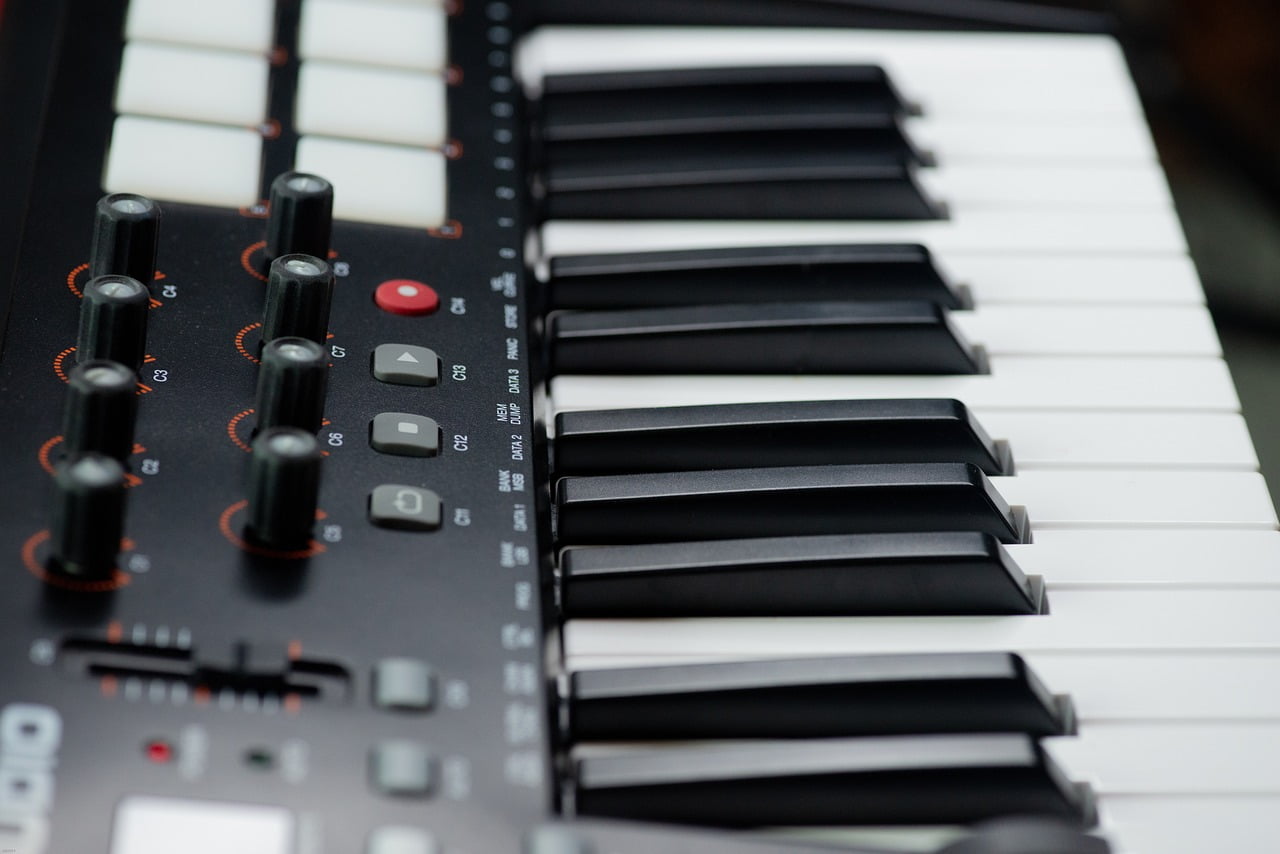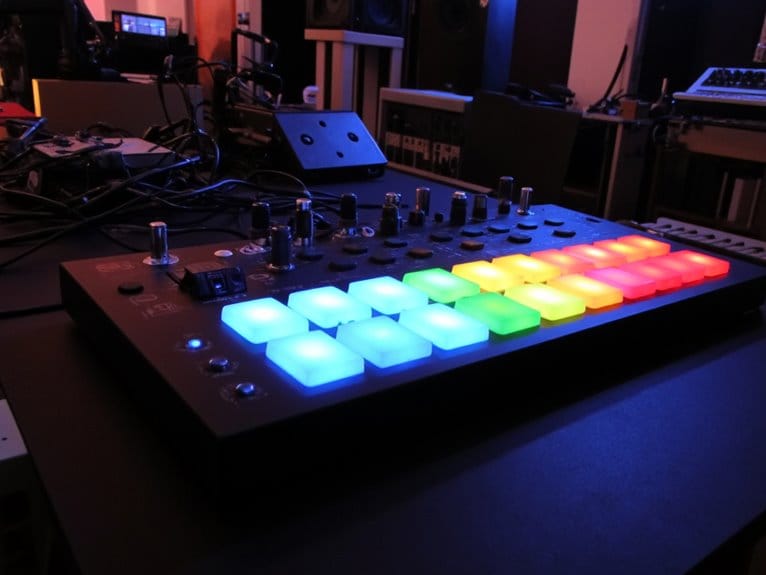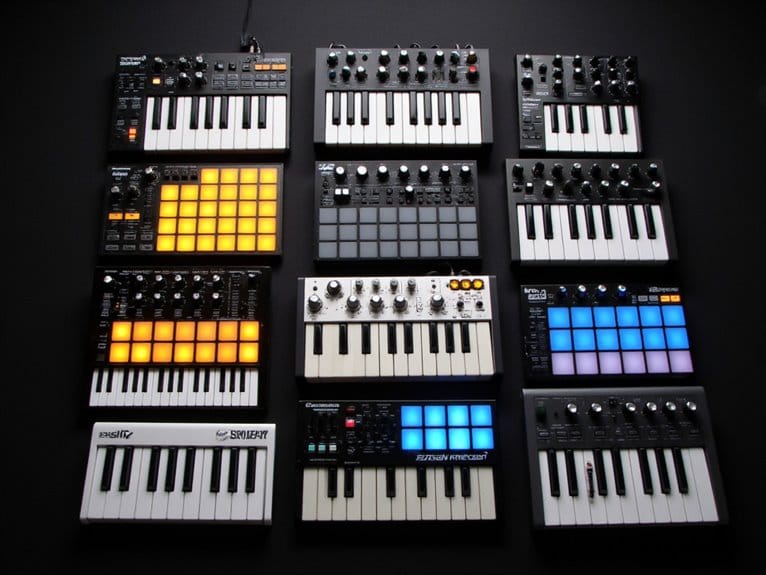MIDI Controller Drumming Techniques: Tips for Realistic Drum Programming
Hey there! If you're looking to level up your drum programming game, you've come to the right place. We're about to spill the beans on how you can achieve super realistic drumming using your trusty MIDI controller. Trust me, it's going to be a game-changer.
We are supported by our audience. When you purchase through links on our site, we may earn an affiliate commission, at no extra cost for you. Learn more.
First things first, let's talk about finding the perfect controller for you. It's like finding your soulmate, you know? You want something that feels comfortable and responsive, like an extension of your own hands. Once you've found the right one, it's time to dive into the world of drum articulations and velocity. These are the secret ingredients that give your beats that authentic, human touch. We're talking about the subtle nuances and variations that make your drumming sound oh-so-realistic.
But wait, there's more! We're going to show you how to add that natural feel to your beats with some awesome humanizing techniques. It's like giving your drumming a breath of fresh air, injecting life and groove into every beat.
Now, let's talk about layering drum samples. Picture this: it's like building a delicious sandwich with different flavors and textures. By layering your drum samples, you can create depth and richness that will make your beats jump out of the speakers. Oh, and don't forget about incorporating realistic fills and rolls. It's like adding sprinkles of excitement and flair to your drumming, taking it to a whole new level.
Last but not least, we've got some innovative MIDI programming techniques up our sleeves. These little gems will help you enhance the dynamics of your drumming, making it sound more organic and dynamic. Trust me, your beats will never be the same again.
So get ready to revolutionize your drumming with these cutting-edge tips. We're here to help you unleash your creativity and take your drum programming skills to new heights. Let's do this!
Choosing the Right MIDI Controller
When choosing a MIDI controller for drum programming, it is important to consider the specific features and capabilities that will best suit your needs. A MIDI controller that offers a wide range of drum sounds and responsive pads will allow you to create realistic and dynamic drum tracks. Look for controllers that have velocity-sensitive pads, as this will give you the ability to play with varying degrees of force, just like a real drum kit. Additionally, consider the number of pads available on the controller, as this will determine the complexity of your drum patterns. Controllers with additional features such as knobs, faders, and buttons can also greatly enhance your drum programming experience, allowing you to easily manipulate sounds and effects in real-time. By carefully considering these factors, you can select a MIDI controller that will enable you to achieve innovative and professional drum programming. It’s also beneficial to explore MIDI controllers that offer integration with your preferred digital audio workstation (DAW), as this will streamline your workflow and improve efficiency. Additionally, look for a MIDI controller that includes customizable presets, enabling you to tailor your setup for different projects or genres quickly. Ultimately, investing in a quality MIDI controller not only enhances your creativity but also elevates the overall production quality of your music.
Understanding Drum Articulations and Velocity
To understand drum articulations and velocity, you need to grasp the concept of how different drum hits and the force applied to them affect the sound produced. Drum articulations refer to the specific techniques used to play the drums, such as ghost notes, rim shots, and accents. Each articulation produces a unique sound that adds depth and realism to your drum programming. Velocity, on the other hand, refers to the force or intensity with which you hit the drum. When programming drums, varying the velocity of each hit can create a more dynamic and natural sound. By understanding and utilizing different drum articulations and velocity, you can achieve a more realistic and expressive drum performance in your MIDI programming, pushing the boundaries of innovation and creativity.
Utilizing Humanizing Techniques for a Natural Feel
To achieve a natural feel in your drum programming, you can enhance realism by utilizing humanizing techniques. These techniques aim to replicate the imperfections and nuances of a live drummer, adding a sense of organic rhythm to your programmed drums. One way to humanize your drum patterns is by introducing slight variations in timing. Instead of having every drum hit perfectly quantized, consider deliberately shifting some hits slightly ahead or behind the grid. This creates a more human-like groove. Another technique is to add subtle velocity changes to your drum hits. Real drummers rarely hit every drum with the same force, so by adjusting the velocity of each hit, you can mimic this dynamic range. Additionally, experimenting with different drum articulations, such as ghost notes and accents, can further enhance the natural feel of your programmed drums. By incorporating these humanizing techniques into your drum programming, you can elevate your tracks and captivate your audience with a more authentic and innovative sound.
Layering Drum Samples for Depth and Texture
To achieve depth and texture in your programmed drums, layering drum samples is a crucial technique that builds upon the previous discussion of humanizing techniques. Layering involves combining multiple drum samples to create a more complex and realistic sound. By blending different samples together, you can enhance the tonal characteristics and add sonic richness to your drum tracks.
When layering drum samples, it's important to select samples that complement each other. Look for samples with different frequencies and sonic qualities to create a balanced and dynamic sound. For example, you could layer a punchy kick drum with a deeper and more resonant kick sample to achieve a fuller and more impactful sound.
In addition to selecting the right samples, pay attention to the volume levels and EQ settings of each layer. Adjusting the levels and EQ can help prevent muddiness and ensure that each layer contributes to the overall sound without overpowering others.
Experiment with different combinations and processing techniques to create unique and innovative drum sounds. Don't be afraid to think outside the box and push the boundaries of traditional drum programming. Layering drum samples is a powerful tool that can take your programmed drums to new heights of depth and texture.
Incorporating Realistic Drum Fills and Rolls
When incorporating realistic drum fills and rolls, you'll enhance the dynamics and energy of your programmed drums. Drum fills and rolls are essential for creating excitement and adding variation to your drum tracks. To achieve a realistic sound, it's important to understand the techniques used by professional drummers. When programming fills, consider the placement and timing to mimic the way a drummer would naturally build up to a climax. Use a combination of different drum samples and velocity changes to create a sense of movement and intensity. Incorporate rolls to add complexity and flair to your drum patterns. Experiment with different roll lengths and speeds to find the right balance for your track. By mastering these techniques, you can create realistic and dynamic drum tracks that captivate your audience.
Enhancing Dynamics With MIDI Programming Techniques
Enhance the dynamics of your programmed drums with MIDI programming techniques. By utilizing these techniques, you can add a level of realism and nuance to your drum tracks that will captivate your audience. One effective technique is to vary the velocity of each drum hit. Experiment with different velocities to create a more natural, human-like performance. Additionally, utilizing MIDI controllers with pressure-sensitive pads can allow for even greater control over dynamics. By adjusting the pressure applied to the pads, you can create subtle changes in volume and intensity. Another technique to consider is using MIDI automation to control parameters such as volume, panning, and effects. This allows for dynamic changes throughout the track, adding depth and interest. With these MIDI programming techniques, you have the power to take your programmed drums to the next level of realism and musicality.
Experimenting With Different Drumming Styles and Genres
Try exploring various drumming styles and genres to expand your programming skills and create diverse and captivating drum tracks. Experimenting with different drumming styles allows you to push the boundaries of your creativity and deliver unique and innovative drum programming. Start by researching different genres such as rock, jazz, hip-hop, electronic, and world music. Analyze the drumming patterns, rhythms, and techniques commonly used in each genre to gain a thorough understanding. Then, incorporate these elements into your own drum programming. For example, in rock music, focus on powerful and energetic drum beats with strong snare hits and driving kick patterns. In jazz, emphasize improvisation and syncopated rhythms. By immersing yourself in various drumming styles and genres, you can develop a versatile drumming style that sets you apart and keeps your listeners engaged.
Conclusion
In conclusion, mastering the art of realistic drum programming using a MIDI controller requires careful consideration of various factors. From choosing the right controller to understanding drum articulations and velocity, utilizing humanizing techniques, layering samples, and incorporating authentic fills and rolls, there are numerous techniques to achieve a natural feel. Enhancing dynamics through MIDI programming techniques and experimenting with different styles and genres further adds depth and texture to your drum programming. With practice and attention to detail, you can create professional and lifelike drum tracks. Additionally, integrating your MIDI controller with your digital audio workstation (DAW) allows for seamless workflow enhancements, enabling you to control your DAW via MIDI effectively. This setup not only streamlines the production process but also opens up new possibilities for real-time adjustments, ensuring that every beat resonates with precision. By continually refining your skills and exploring innovative techniques, you’ll elevate your drum programming to new heights. Additionally, mastering MIDI mapping is crucial for seamlessly integrating your drum sounds and creating a more responsive workflow. By effectively mapping your MIDI controller to specific functions and samples, you can streamline the creative process and enhance your overall efficiency. Ultimately, investing time in this practice will not only improve your drum programming skills but also elevate the quality of your musical compositions.







